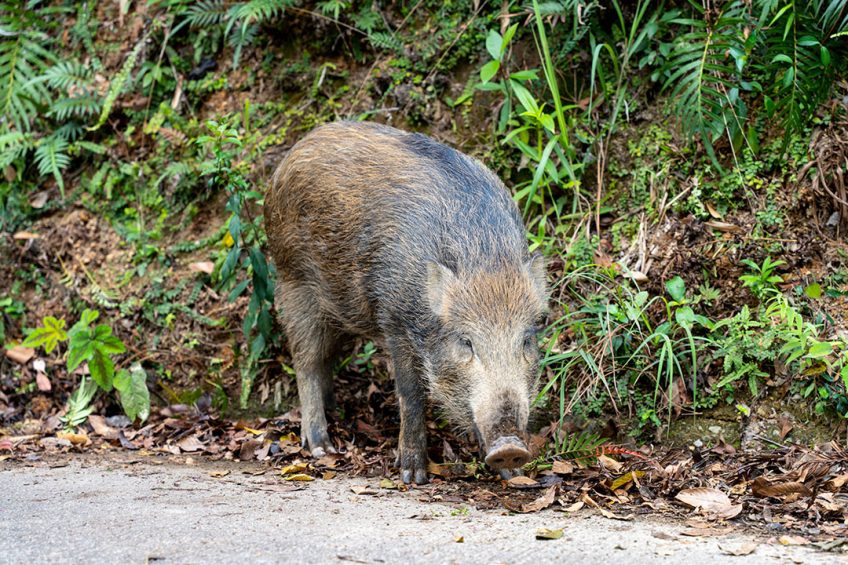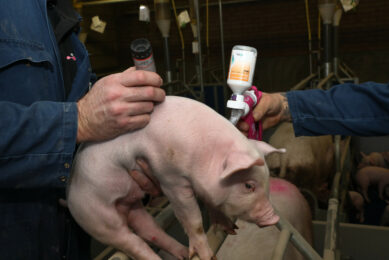ASF Asia: Wild boar as virus reservoir

As Asia is slowly trying to rebuild from the devastating outbreaks of African Swine Fever, it is worthwhile to pay attention to the reservoir for the virus: wild boar. In this overview of the situation in Asia, Pig Progress editor Vincent ter Beek especially follows the outbreaks in wild boar.
For a long time, the track of African Swine Fever in Europe and Asia appeared to follow a different pattern. Where in Europe lots of reports came of dead wild boar in forests with here and there the odd (backyard) farm being infected, Asia showed the reverse picture. Many (backyard) farms and villages fell victim to the virus and only rarely (if ever) a case of the virus was reported from wild boar.
Why does the ASF spread appear different?
There are a number of reasons to explain that difference. Obviously, biosecurity situation plays a role. Although Asia is quickly catching up, top-notch farm biosecurity is not practised everywhere. And when animals are being traded in wet markets, in villages and on the backs of bicycles, chances of spreading the virus are bigger; hence the rapid spread in pigs in Asia.
Consistent reporting of the virus also plays a role. For a variety of reasons, ranging from a suboptimal veterinary infrastructure to all kinds of political motives, not all outbreaks of ASF actually make it to the reporting system of the World Organization for Animal Health (OIE). So it happens that some countries rarely report outbreaks, and if they do, it is only 1 mention about the pig population of an entire province that had vanished. The other side of the spectrum shows countries diligently reporting immediately and in great detail each and every wild boar or backyard farm that has tested positive.

Pig Progress experts talk
Read more Pig Progress expert opinions
Reporting many ASF outbreaks
We have to give credit to South Korea and Russia for frequently and immediately reporting multitudes of outbreaks. Thanks to the consistent reporting of outbreaks of all ASF cases a picture emerges that might be valid for other countries in Asia, from which not so much detailed information seems to be coming.
And perhaps it may not affect a town or a region directly in their food security, it is important to follow the virus’ presence in wild boar too. After all, when it is in wild boar, there is a constant reservoir for the virus to remain present, and it may infect the domestic pig population at any moment. On top of that, as long as ASF is still around in wild boar, exports of pig meat are not possible.
South Korea: Outbreaks near the border
I have spent some time last weekend to update the map of Asia with outbreaks reported over the last few months. South Korea is worth zooming into. Last month 2 more farms were infected (with 721 and 1,020 pigs) but more interesting in this context is that more than 750 reports are made of ASF presence in South Korea, mostly in wild boar in the northern provinces Gyeonggi-do and Gangwon-do. They all occurred within 30km from the border with North Korea and the strip runs from east to west over the peninsula.
Russia: Many outbreaks close to border with China
Another case close to the border of North Korea can be found when zooming in to the far east of Russia. Russia and North Korea share about 15km of border, south of Vladivostok. Within 2km of that border, a Russian backyard farm was found infected in August.
Outbreaks in the far east of Russia have been plentiful anyway, for instance around the river Amur and north of Vladivostok. Just as in South Korea, also the outbreaks nicely follow a border here, in this case with China’s Heilongjiang province (a province where officially only 6 outbreaks have been reported between 2018 and today). The outbreaks in Asian Russia happened on backyard farms as well as in wild boar.
Yet another remarkable report came from infected wild boar and villages in Russia’s Zabajkal’skij Kray in July, just a few km north of the border with Mongolia. This area is more than 1,200km away from other more recent finds in Russia.
So all in all, keeping in mind how easily the ASF virus can travel across borders, the frequency of outbreaks in both Russia and South Korean wild boar makes it likely that the virus is present in wild boar populations in both North Korea and northern China as well – and perhaps it’s even spread out over a larger part of Asia too.

Read more about pig health in the Pig Progress health tool
ASF updates from China in 2020
Now let’s turn to China, as what do we know officially? The country reported only 20 ASF updates throughout the whole of 2020. Of these, 9 were found at highway checkpoints in (illegal) transports; that included the 3 most recent cases in Chongqing and Sichuan provinces.
Another 9 were found on (backyard) farms. The largest having almost 10,000 pigs on-site and the smallest had 17 pigs on-site.
But most interestingly in this context are 2 reports from March 2020, from Hubei province, in the centre of China. Those spoke of 2 and 5 wild boar having been found infected. It’s almost like the exception proving the rule.
And to me it proves that perhaps the spread of the virus in Europe and Asia is more alike than it first seemed. One just has to know where to look.











